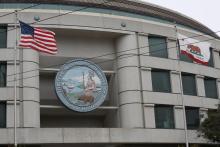Old Data Woes Could Hinder Round Two of Tribal Broadband Connectivity Program
The Tribal Broadband Connectivity Program (TBCP) is in the midst of accepting applications for a second round of funding, with nearly $1 billion in grants available. A significant program with important limitations, TBCP has made some changes in round two – including one that could mean the resurgence of old barriers for Tribes.
TBCP launched in 2021 with a total $3 billion in allocations, an unprecedented federal investment in Tribal broadband. The TBCP also requires no minimum match from Tribal governments, easing a long-time barrier to grant participation.
Interest in the program’s first round of funding was pronounced. After more than 300 applications requesting nearly $6 billion, NTIA selected 226 projects for award, to the tune of $1.9 billion. At least 70 of these were “equitable distribution” awards – a system that guaranteed any of the 574 federally recognized tribes with a satisfactory application up to $500,000. All together, these grants expect to reach more than 170,000 Tribal households.



